General Choi, Hong-Hi 최홍희 (崔泓熙)
CHOI, Hong-hi was born in what is now considered DPRK (North Korea) or the Democratic People’s Republic of Korea 조선민주주의인민공화국. Born in the village of Haga-myun in the northern part of Hamgyoung-Namto (함경남도 / 咸鏡南道)
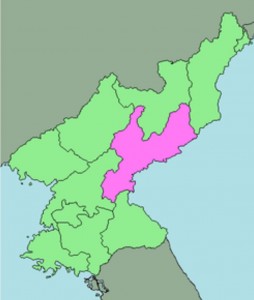
which is located in the northeastern part of the Korean peninsula. Born into a poor family, his father Choi, KwanJun had done many things, he studied herbal medicine, owned a small brewery, and practiced acupuncture but we were prone to drinking and gambling. What little “inheritance” the Choi family had came from his mother HyeJun as she was the eldest of a wealthy family. Choi’s mother had a total of eight children but lost five at a very young age.
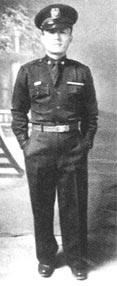
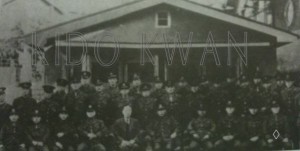
Only grade, and had wondered how he made it past 4th, considering he was more into making mischief than learning based on Japanese and European curriculum, his father only cared that he learn from the Chinese Classics, (中國古典典籍) refers to the Chinese texts which originated before the imperial unification by the Qin dynasty 秦朝.
However, he along with his family knew that the only way to get through life under Japanese rule (1910 to 1945) was to earn money and apply for a school. Choi arrived in Kyoto and soon met with a family friend to help him transition to a Korean in Japan. After about three months of working and studying the young Choi received his sponsor who then led him to witness his first Karate class at the Doshisha University 同志社大学. So it’s clear Choi, started his Karate training late in 1938 or early 1939. After about two years the young Choi ended up at Chou University looking to study Law. This also happens to be the same university that Lee, Won-Kuk was a student at! in 221 BC, particularly the “Four Books and Five Classics” of the Neo-Confucian tradition, themselves a customary abridgment of … which again was not unusual in the highly Confusion society of Korea. Also, much like many other Koreans of the time young Choi became very anti-Japanese.
By early 1943 Choi, Hong-hi was a freshman at Chuo University 中央大学(Lee, Won-Kuk was a junior) and the Japanese were now in a firm retreat across the Pacific losing ground during World War II. By October of 1943, Choi along with all the other Koreans knew that time was coming and that they would soon be used as draftees for the Japanese Imperial Army, and was given notice of such. And on the last day of registration (20 October 1943) finally was “captured” to sign the enlistment papers without delay. Since Choi was the most experienced at writing (Remember, Koreans didn’t use their Korean names, but Japanese names and thus Japanese Kanji.) So on 16 January 1944, Choi became Private Nishiyama, Yuseki (西山)(Koreans, again had to use Japanese names rather than their family names.) started his one-month basic training. And was shortly stationed in Pyongyang.
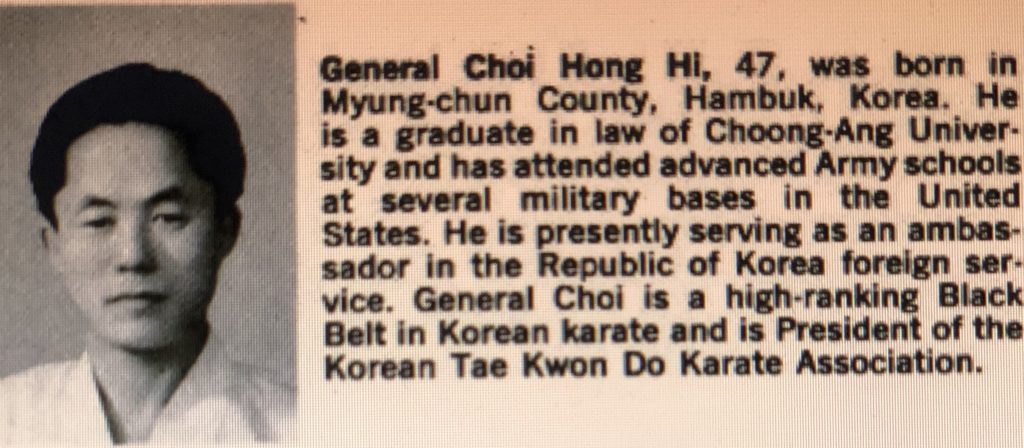
Private Nishiyama (Choi), was assigned to the 42nd Regiment of the 30th Infantry Division 第30師団 (14 May 1943 to 1945) of the Japanese Imperial Army. His first assignment was to work in the stables tending to the horses used by the military to move equipment etc. At this time and in this part of the Japanese Empire, not many units were “mechanized.” After a short period, Private Nishiyama Yuseki became part of the organizing committee of the Pyongyang Hahk-Byung (Korean student soldiers). This organization one of many anti-Japanese moments stated purpose and goals were: 1) We shall fight for the independence of our nation with total devotion. 2) We shall unite regardless of individual ideological beliefs. 3) We shall follow the order of the organization. 4) We shall open membership through intelligence and forgiveness. However, this was short-lived as with many organizations of the type, they were betrayed and Private Nishiyama Yuseki (Choi) was arrested along with other leaders and first held at the Cho-Uil Military Police post then shortly transferred to Pyongyang Prison after receiving an eight-year sentence. With the fall of the Japanese Empire on the 16th of August 1945, Private Nishiyama Yuseki could now go by his given name with the iron gate opened wide for political prisoners such as himself, with only having to serve seven months out of the eight years sentence, which if the Japanese were not defeated would have surely meant death as evidence with other Japanese prisoners. An interesting footnote to the history of Taekwon-Do is that, without the Allied Forces, principally the USA and the Soviet Union, we very well, may not have ever known the art we call Taekwon-Do today or Choi, HongHi.
Soon after liberation and a brief return to his home district, Choi traveled to Seoul before the 38th Parallel became the “official” line dividing the North from the South. Having been involved in the Hack-Byung movement, Choi was able to get an appointment at the Military English Language School sponsored by the U.S. in Seoul under the “Bamboo Plan.” So, on January 15, 1946, Choi along with Lim, Sun-Ha 10039 applied to the academy. The “principal” of the academy was a US Army Major, Jonathan Reese. With a simple interview, Choi became one of 110 founding members of the “prototype” for what would become the Republic of Korea Army ROKA 대한민국 육군 / 大韓民國 陸軍. National Defense Force in Taenung, Kyunggi Province. Of course, the first goal of this school was to train Koreans to speak English, thus enabling an “easier” transition between the US Armed Forces and the newly created Republic of Korean Armed Forces, although this didn’t become official until 1948. 2nd Lt. Choi was the 44th senior member in this class with serial number 10044.
Written and compiled
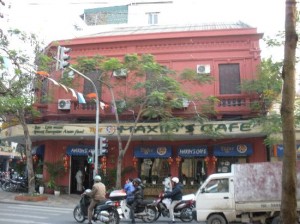
GEN. CHOI’S HIGHLIGHTS
A Partial Chronological Listing
- A founding member of the ROK Army he taught Korean Martial Arts under the then-popular Tang Su Do label to soldiers under his command since 1946
- 1949 He traveled to America for military training & took the opportunity to display his martial art there (most likely 1st Korean to do so)
- 1953 formed the 29th Infantry “Fist” Division on Jeju Island using Korean Martial Arts to build character, strength, and fighting skills and instill esprit de corps
- 1955 (April 11) After conceiving the Taekwon-Do name he obtained the official authorization from the 1st ROK President Dr. Rhee Syngman, Ph.D
- 1955 created the 1st two Korean Tuls or forms, then called Hyungs, Hwa Rang Tul & Chung Mu Tul, he would go on to create 26 in total, all named after great Korean Patriots or significant events & themes in Korean history & culture
- 1957 Vice President of the short-lived Taekwon-Do Association of Korea
- 1959 (March) Led the Military Taekwon-Do Demonstration Team to Vietnam & Taiwan; the 1st time ever Taekwon-Do was exhibited abroad
- 1959 (September 3) Formed the Korea Taekwon-Do Association & was elected 1st President
- 1959 (October) Wrote the 1st book ever on Taekwon-Do
- 1959 Established and became the 1st Director of the Martial Arts Department in the Army
- 1961 Opposed the use of the new compromise name of TAE SOO DO & continued his development under the Taekwon-Do Banner
- 1962 Personally introduced Taekwon-Do to Malaysia when assigned there as the 1st Korean Ambassador
- 1963 (July) Formed the Malaysian Taekwon-Do Federation
- 1964 Formed the Singapore Taekwon-Do Association
- 1965 Vietnam Taekwon-Do Association formed
- 1965 (January) Elected as the 3rd President of the Korean Tae Soo Do Association
- 1965 (August) Successful in lobbying for changing the name to Taekwon-Do
- 1965 Wrote the 1st English language book on Taekwon-Do
- 1965 Led a ROK Government sponsored Kukki Taekwon-Do Goodwill Tour around the world
- 1966 (March 22) Formed the International Taekwon-Do Federation (ITF) in Seoul, Korea with the consent of 9 Nations around the world
- 1967 Awarded the 1st Class Distinguished Service Medal by the Government of Vietnam
- 1968 Introduced Taekwon-Do to C.I.S.M. as the Chief Delegate for Korea at their meeting in Paris, France
- 1968 Korean (ROK) Government Sports Award
- 1969 Published the 1st ever Taekwon-Do Magazine
- 1972 Wrote a Textbook that was commonly referred to as the “bible of Taekwon-Do” – 6 Editions & 2 reprints up until 1986, 1st reprint needed the next year (73)
- 1972 Moved the ITF Headquarters to Toronto Canada, a diverse major metropolitan area in a democratic Country strategically located in the center between Asia & Europe, as well as due north of South America & the Caribbean to help further facilitate the global spread of Taekwon-Do without regard to politics
- 1974 Hosted the 1st ITF World Championships in Montreal Canada, which was the 1st ever World Championships outside of Korea and demonstrated that Taekwon-Do was truly an international sport & there they introduced 4 categories of competition, as well as team events, to help ensure the Overall World Champion was a complete martial artist
- 1978 The ITF World Championships were held in Oklahoma City, USA & expanded to female competitors for the 1sttime ever in any World Championships
- 1981 The ITF World Championships were held in Argentina; the 1st time ever a world championship was hosted in South America
- 1983 Completed the 15 Volume Set of Encyclopedia of Taekwon-Do, a written work truly unprecedented in the martial arts world which has at least 5 Editions or printings
- 1984 The ITF World Championships were held in Scotland; the 1st time ever a Taekwon-Do world championship was hosted in the United Kingdom or a Commonwealth Nation
- 1985 Relocated the ITF Headquarters to Vienna Austria, a democratic Nation as Vienna is located in Central Europe and Austria maintains a long-standing neutral political posture, thus enabling him to continue his vision to disseminate Taekwon-Do without regard to nationality, politics, religion, race, creed or national boundaries, a personal dream he lived to see come true
- 1987 The ITF World Championships were held in Athens, Greece; the 1st time ever a Taekwon-Do world championship was hosted in Greece
- 1988 The ITF World Championships were held in Budapest Hungary; the 1st time ever a Taekwon-Do world championship was hosted in a communist country
- 1988 Published a Condensed Version the Single Volume Book of his previously published Encyclopedia of Taekwon-Do which presently has at least 6 Editions
- 1989 Named “Man of the Year” by Tae Kwon Do Times Magazine
- 1992 Honorary Doctorate Degree awarded by the State Central Institute of Physical Education of Russia in Physical Education
- 1992 Continuously listed in the Encyclopedia Britannica as the “principle founder of Tae Kwon Do”
- 1993 The ITF Junior (under 18) World Championships were held in Moscow, Russia the 1st time ever a Taekwon-Do world championship was opened to the junior age competitors
- 1999 Nominated for the Nobel Peace Prize by Canada, his adopted homeland
- 1999 Formed the International Martial Arts Games Commission in Argentina, an Olympic type of event limited to just the fighting arts
- 1999 Honorary Doctorate Degree awarded by the D.P.R. Korea State Commission on Academic Degrees & Titles in Sports Science
- 2000 Wrote Moral Guide Book
- 2000 Published a 3 Volume Set of Memoirs titled Taekwon-Do and I
- 2001 Honorary Doctorate Degree awarded by Moldova State University in Philosophy
- 1918-2002 Received numerous other awards and honors for his global work on Taekwon-Do & for teaching Taekwon-Do for decades to everyone, regardless of political ideology, national boundaries, race, religion, or creed & as a vehicle to reunite his beloved Homeland of Korea
- 2009 Honored posthumously by the Official Tae Kwon Do Hall of Fame
- 2009 Inducted posthumously into the Canadian Black Belt Hall of Fame as The Founder of Taekwon-Do
- 2014 Inducted posthumously into the Korean Martial Arts Masters Hall of Fame
- 2014 Honored by the Canadian Government by having the gymnasium hall at Canada’s Embassy in Seoul Korea named Choi Hong-Hi Gym
Compiled & Written by Master. Dr. George Vitale, – TKD.research@yahoo.com
MORE TO FOLLOW!
Worth watching this whole but if you prefer you can fast forward to 1:10:43….this was produced in DPRK (North Korea) in 1994!!
General Choi’s Final Words (as told and recorded directly to GM Hwang, Kwang-Sung K-9-1)
(Please note, this is my translation of the original Korean text)
ALSO NOTE, THERE IS A MISCONCEPTION THAT THIS WILL WAS TOLD TO “NORTH KOREANS” AND THEN LATER TOLD TO THE PEOPLE PRESENT, THIS IS NOT TRUE! GENERAL CHOI SPOKE THIS WILL TO GM HWANG, KWANGSUNG K-9-1 AND IT WAS HE WHO MADE SURE THAT IT WAS WRITTEN DOWN AS GENERAL CHOI SPOKE IT TO HIM. ALL PRESENT COULD UNDERSTAND GENERAL CHOI CLEARLY (KOREAN) AND HE WAS NOT UNDER ANY SEDATION OR OTHER DRUGS AT THIS TIME!
11 June 2002
I am the man who has the most followers in the world.
I am the happiest man who has done everything to do in my life.
Fortunately, you have come.
Is Mr. Chang Ung here?
Mr. Rhee, Ki-Ha, it is good you have come. I am glad my son and daughters liked you.
You probably might know Mr. Chang Ung as the tallest Korean and I want to hold the highest position in the ITF.
If only I had been as tall as Mr. Chang Ung, I could have had fewer opponents, however, as my body was so small that meant many opponents. Thus, all alone, I could not fight them all forever.
But I have never swayed from justice on my being on my side.
I have always worried about my successor to the presidency, however, my mind is set at ease for there is Mr. Chang.
Mr. Hwang, KwangSung, your duties are very big and important as spokesman and the Chairman of the Merger Committee. It is my wish to merge Taekwon-Do into one. Do your duty responsibly.
Mr. Park, Jong-Soo immigrated to Canada in 1967, before that he taught Taekwon-Do in Europe. In 1972 I went to Canada where Mr. Park resided leaving my family behind.
In those days Taekwon-Do was not as widely known, so I use to say that you would have to crave “Taekwon-Do” on my coffin. Now Taekwon-Do has developed on a large scale.
I love Mr. Tom MacCallum, I have always worried that he might die before me, what I could do to help his family, he has given a lot to the ITF. And I have no secrets hidden from him. Thank you for what you have done. I love you.
Mr. Leong Wei Meng is a man of a good conscience and has given a lot to the education of Taekwon-Do, since he was financially well, I thought of him as a stockholder for the Chang Hon Foundation.
Mr. Hwang, Jin is doing well following the path of Mr. Chon, Jin-Sik. So I want to appoint him as a member of the Consultative Committee. Please see to it that the Committee is enlarged to 9 positions to appoint him and Mr. Jong, Jae-Hun.
My followers, Taekwon-Do have never existed without the help of D.P.R. Korea, all should know this. The ITF is an international organization and we do not need to argue about ideology. Does the United Nations belong to the negros because their Secretary-General is negro? Please do not think this way.
Taekwon-Do must be centered in Korea.
Choi, Jung-Hwa lied to me at the airport, and he deceived me again. You need to tell the public through the internet that I do not forgive him as Taekwo-Doin but I do forgive him as his father.
Unless Jung-Hwa apologizes to the Taekwon-Do world, he should never be forgiven. While I still breathe, please send this message via the internet as soon as possible.
TAEKWON-DO EXISTS FOREVER.
1630 hrs to 1710hrs 11 June 2002
In the hospital in Pyongyang, D.P.R. Korea
In attendance:
Mrs. Choi, Joon-Hi – Canada (wife)
GM Hwang, Kwang-Sung K-9-1 – USA (Aide to Gen., Spokesman for ITF & Merger Committee)
GM Rhee, KiHa GB-9-1 – UK (ITF Vice-President)
GM Park, Jong-Soo – Canada C-9-1 (Member of Consultative Committee)
Master Thomas MacCallum – Austria GB-8-3 (Secretary General)
Master Hwang, Jin – Japan J-8-1 (Member of Consultative Committee)
Master Leong Wei Meng – Greenland GR-8-1 (Chairman of Consultative Committee)
Master Phap Lu – Canada C-8-4 (Member of Executive Committee)
Mr. Chang, Ung – D.P.R. Korea (IOC Member)
Mr. Jong, Jae-Hun – D.P.R.Korea (Sec. Gen. of the International Martial Arts Game Committee)
Mr. Hwang, Bong-Yu – D.P.R.Korea (Chairman of Korea Taekwon-Do Committee)
Mr. Rang, Bong-Man – D.P.R.Korea (Sec. Gen. Korean Taekwon-Do Committee)
“While the heaven and earth cry in sorrow, we are gathered here today to say our final goodbye to you General Choi Hong Hi, the founder of Taekwon-Do.
Despite all the hardships and obstacles, you have made Taekwon-Do, the are we treasure as our own lives. For more than half a century, you have dedicated your life and spirit to bringing Taekwon-Do to its full maturity.
We now practice this wonderful art that you have given us in its true spirit regardless of nationality, religion, and ideology.
While making our bodies healthier and stronger, we have learned to live closer to the tenets of Taekwon-Do. We have learned honor, righteousness, fervor, determination, responsibility, and cooperation.
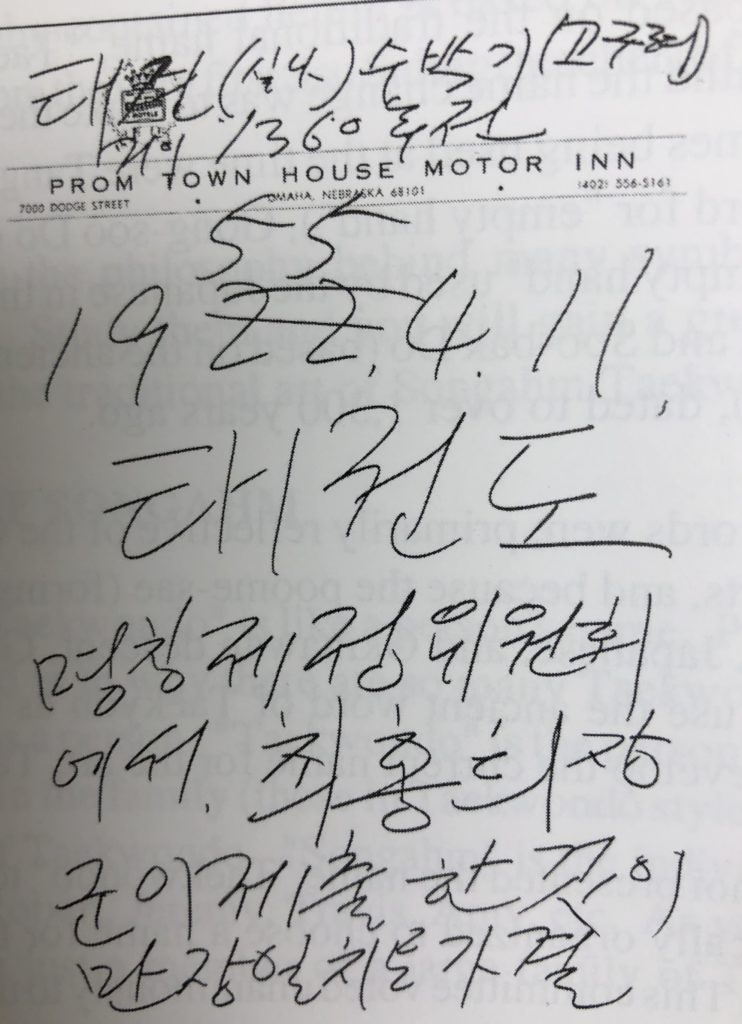
As you loved it, we too sir, love Taekwon-Do with our hearts. We now take your teachings and will strive to maintain the independence of martial art in its purest form. We will not compromise the principles of Taekwon-Do thereby refusing to side with any ideology, politics, monopolization, or abuse.
The one way you have shown us is the path we will follow. The way of a true warrior. We pledge to you today to follow the leadership of our new president armed with your Taekwon-Do philosophy so that your Taekwon-Do will be handed down to the many generations to come in its purest form.
This is our duty as Taekwon-Do practitioners to guarantee the continuation of this wonderful art. You sir now have left us. We ask you to look down upon us and guide us in this endeavor. We will forever remember you and treasure you in our hearts as our great teachers.
Dear sir, you can now finally rest in peace.”
Professor Kim, WonJu
President of the International Taekwondo Federation Dies
Choe Hong Hui, president of the International Taekwondo Federation, died on June 15 in Pyongyang. He was 84.
The public funeral of Choe Hong Hui took place in Pyongyang Monday. Present there were the members of the funeral committee and officials concerned as well as family members and relatives of the deceased.
A funeral service was held at the Patriotic Martyrs’ Cemetery.
Choe Thae Bok, chairman of the DPRK Supreme People’s Assembly, made an address at the service.
A wreath from DPRK leader Kim Jong Il was placed before the grave.
Also laid there were wreaths in the name of the presidium of the Supreme People’s Assembly, the cabinet, institutions, organizations, the International Taekwon-do Federation, and the diplomatic corps in Pyongyang.
![]()
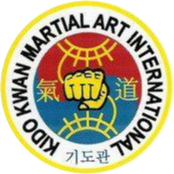
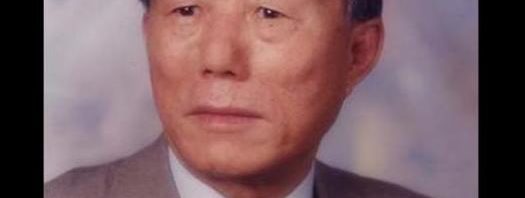
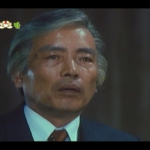
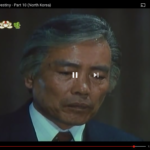
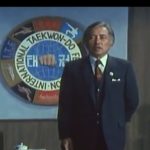
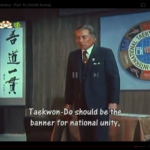
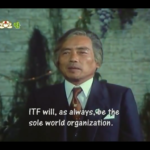
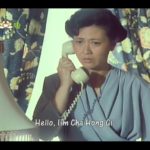
Average Rating